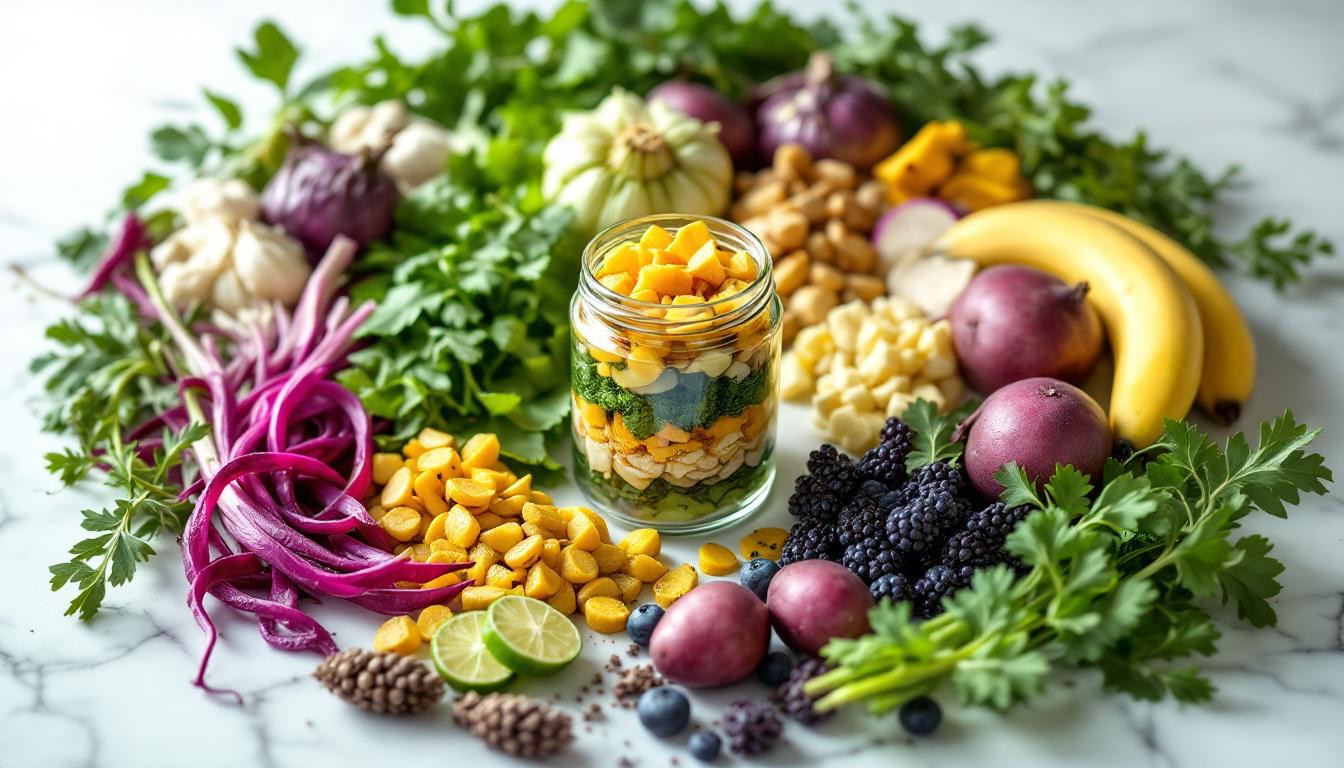Did you know that 70% of your immune system resides in your gut? The secret to unlocking better health might be hiding in plain sight—through prebiotic foods that nourish your internal ecosystem. These unsung heroes of nutrition could transform your digestive health in ways you never imagined.
The prebiotic powerhouse effect
Prebiotics are specialized plant fibers that act as fertilizer for beneficial gut bacteria. Unlike probiotics, which introduce new bacteria, prebiotics feed the good microbes already living in your digestive system.
“Prebiotics create the perfect environment for beneficial bacteria to thrive, producing short-chain fatty acids that nourish the gut lining and reduce inflammation throughout the body,” explains Dr. Maria Hernandez, gastroenterologist at Austin Digestive Health Center.
When Sarah Jenkins, a 42-year-old teacher, incorporated prebiotic-rich foods into her daily meals, the results were remarkable. “After three weeks of regularly consuming garlic, onions, and bananas, my bloating decreased by 60% and my energy levels soared. It was like a tiny change in my gut created massive improvements throughout my entire body.”
Beyond digestion: surprising benefits
The impact of prebiotics extends far beyond digestive comfort:
- Enhanced calcium absorption for stronger bones
- Better blood sugar regulation for metabolic health
- Reduced inflammation markers throughout the body
Research shows that prebiotics may even influence brain chemistry. “The gut-brain connection is powerful—prebiotics support the production of neurotransmitters that regulate mood and stress response,” notes neurologist Dr. James Wilson. This connection explains why gut health improvements often coincide with better mental clarity and emotional balance.
Prebiotic superstars for your shopping list
Think of prebiotics as the gardeners of your internal landscape, carefully cultivating the conditions where beneficial bacteria can flourish. The most potent sources include:
- Chicory root and dandelion greens (rich in inulin)
- Jerusalem artichokes and leeks (contain multiple prebiotic fibers)
- Green bananas and cooled potatoes (high in resistant starch)
Incorporating these foods gradually is key—too much too soon can cause digestive discomfort. Start with small portions and increase slowly, allowing your gut microbiome time to adapt. Some people find that timing their prebiotic consumption within an eating window enhances benefits.
The synbiotic advantage
For maximum impact, consider the power of combining prebiotics with probiotics—creating what scientists call a “synbiotic” effect. This one-two punch delivers both the beneficial bacteria and their preferred food source in a single strategy.
While not everyone responds well to certain prebiotic foods, most people can find options that work for their unique digestive system. The key is experimentation and patience.
Ready to transform your gut health? Start by adding one prebiotic-rich food to your daily meals this week. Keep a simple food journal to track changes in digestion, energy, and mood. The microscopic shifts happening in your gut could lead to remarkable improvements in your overall immunity and wellbeing. Your future self—with improved digestion, stronger immunity, and balanced mood—will thank you for feeding your internal garden today.
